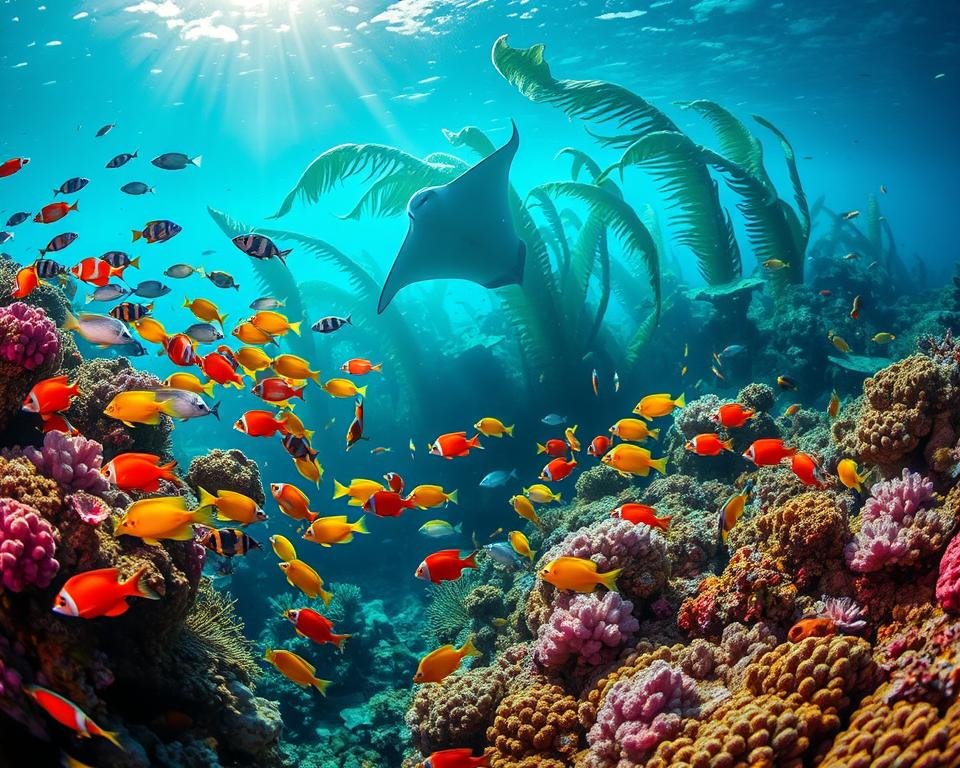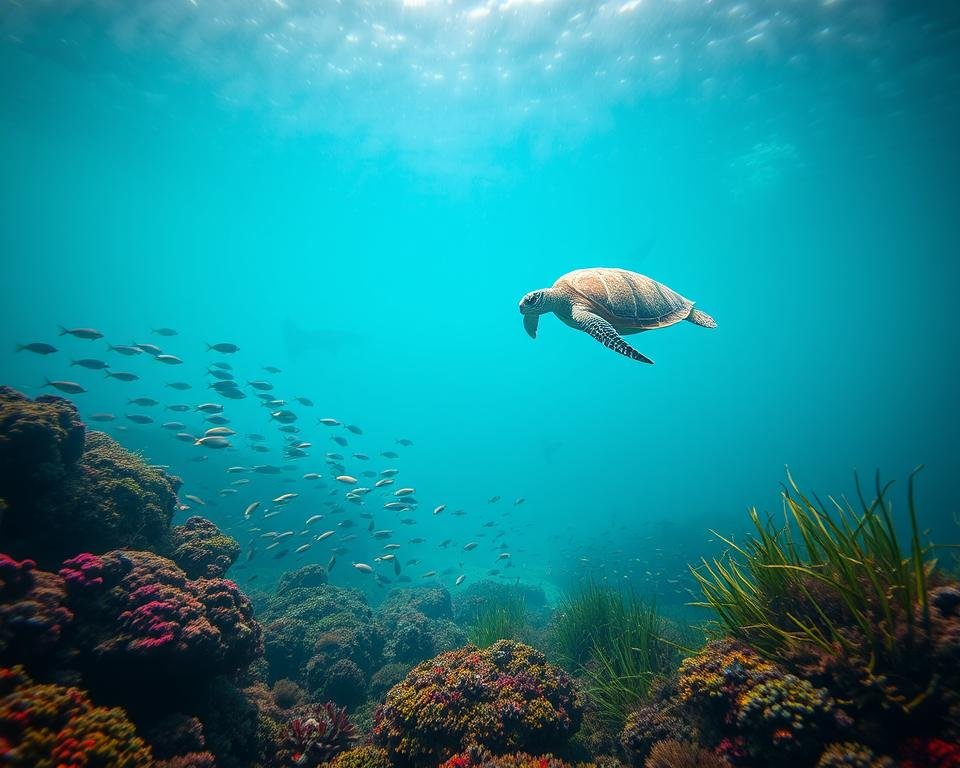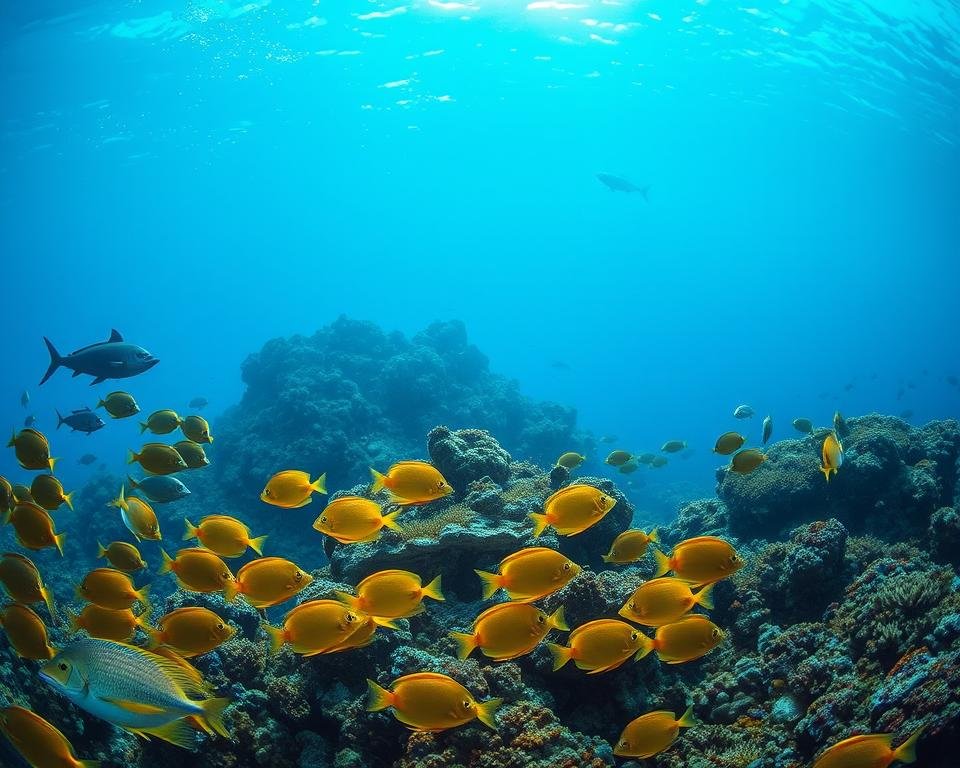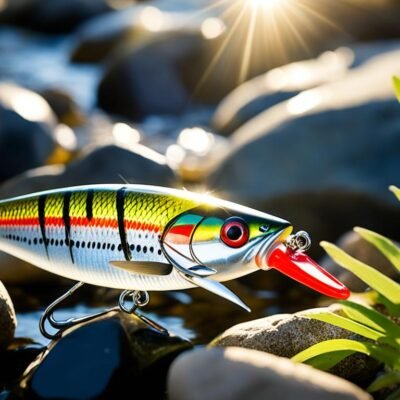Dive into the captivating world of diverse aquatic life and unravel the mysteries of fish species exploration. The rich variety of fish populating our underwater ecosystems plays an essential role in maintaining ecological balance. Understanding fish habitat discovery is key to appreciating the profound impact these amazing creatures have on both marine and freshwater environments.
Fish are more than just a source of sustenance or beauty; they are a vital component of aquatic health, influencing everything from water quality to the survival of other species. By studying fish ecology, we gain insight into how different species adapt and thrive in their unique habitats. This knowledge ultimately fosters broader environmental awareness and the need to preserve these intricate ecosystems.
Introduction to Fish Species
Diving into the realm of fish species provides a treasure trove of knowledge about aquatic life. Understanding ichthyology basics is pivotal for anyone keen on exploring marine life. Fish species identification is essential as it helps distinguish between the myriad of fish types residing in both fresh and saltwater environments.
The classification of fish species usually falls into two main categories: saltwater and freshwater. Saltwater fish, such as clownfish and tuna, thrive in oceans and seas. Conversely, freshwater fish like bass and trout are found in lakes, rivers, and streams. This distinction is crucial for ichthyology basics enthusiasts who wish to delve deeper into marine biology insight.
One fascinating aspect of aquatic life is how fish have adapted to their environments over millions of years. Many species exhibit evolutionary traits that allow them to survive under extreme conditions, making fish species identification an intriguing endeavor. Various adaptations, including body shape, coloration, and reproductive tactics, showcase the resilience and adaptability of fish species across different habitats.
Exploring marine biology insight further reveals the interconnectedness of aquatic ecosystems. These insights highlight how fish species contribute to the overall health and diversity of marine and freshwater habitats. By broadening our knowledge of ichthyology basics and fish species identification, we gain a better understanding of the aquatic world and its numerous inhabitants.
Freshwater Fish Species
Freshwater ecosystems are home to a wide variety of fish species. These environments include rivers, lakes, streams, and wetlands, each providing unique habitats essential for fish habitat sustainability. Let’s dive into some of the most common native fish and their habitats.
Common Freshwater Fish
Several popular freshwater species thrive in various habitats. Bass, for instance, is a favorite among anglers due to its size and fight. It can be found in lakes, ponds, and rivers, usually hiding near structures like logs or plants.
Trout is another well-known species, often associated with flowing streams and rivers. Thanks to their preference for cool, oxygen-rich waters, they are a staple in freshwater ecosystems around mountainous regions.
Carp, a resilient and adaptable fish, is common in many freshwater habitats. Known for its ability to thrive in less-than-ideal water conditions, carp populates a range of environments from sluggish, muddy waters to clean rivers.
Habitats of Freshwater Fish
Freshwater fish inhabit a variety of environments that contribute to fish habitat sustainability. Rivers and streams, with their flowing waters, support species that need well-oxygenated habitats, like trout and certain types of bass. Lakes and ponds provide still or slow-moving waters, where larger fish like largemouth bass and catfish find ample nourishment.
Wetlands, although often overlooked, are vital parts of freshwater ecosystems. These areas serve as nurseries for many young fish, providing shelter and abundant food resources. Fish species in these habitats have adapted to variable water levels and vegetation, showing the remarkable adaptability within freshwater ecosystems.
Marine Fish Diversity
The vast oceans are home to an extraordinary variety of oceanic species. This rich marine biodiversity includes both pelagic fish, which dwell in the open seas, and demersal fish, which are found near the sea floor. Understanding the wide array of marine fish is crucial for appreciating the full spectrum of life within our oceans.
Types of Marine Fish
Among the most well-known pelagic fish are tuna and mackerel, known for their incredible speed and migratory patterns. In contrast, demersal fish like cod and flounder prefer the ocean’s deeper layers. These oceanic species play significant roles in their respective ecosystems, contributing to the overall marine biodiversity.

Coral Reefs and Marine Life
Coral reef ecosystems are among the most complex and vibrant habitats on Earth. These reefs provide shelter and food for numerous marine fish species, creating a bustling underwater metropolis. However, coral bleaching and other environmental threats endanger these critical ecosystems. The loss of healthy coral reefs poses a significant risk to marine biodiversity, affecting not only fish populations but the entire marine environment.
Fish Facts and Habitat
Fish are an incredibly diverse group of vertebrates, featuring unique fish characteristics such as bioluminescence and the ability to detect electric fields. These adaptations allow certain species like the anglerfish and electric eel to thrive in their specific aquatic habitats. Bioluminescence, for instance, is used by deep-sea dwellers to attract prey or communicate in the dark depths where sunlight doesn’t reach.
The diversity of aquatic habitats—from the murky depths of the ocean to vibrant coral reefs, freshwater rivers, and coastal mangroves—showcases how fish adaptation strategies vary widely. Fish living in different environments have developed specialized traits to cope with various habitat conditions. For example, some fish are equipped to tolerate high salinity levels in seawater, while others are adapted for freshwater living.
Habitat conditions such as temperature, salinity, and water depth significantly influence fish physiology and behavior. Many tropical fish, for instance, have specialized methods for dealing with warmer waters, which can sometimes be low in oxygen. Such adaptations not only ensure survival but also contribute to the rich biodiversity within these habitats. Recognizing these unique fish characteristics and fish adaptation strategies helps us better understand the remarkable variety of life forms that inhabit our planet’s waters.
Fish Behavior Patterns
Fish exhibit some of nature’s most extraordinary behavior patterns. Fascinating journeys and curious feeding strategies characterize their lives, influenced by fish migration routes, dietary patterns, and predatory tactics. With a blend of survival instincts and evolutionary developments, these behaviors intrigue marine biologists and enthusiasts alike.
Migratory Behavior
The migratory behavior of fish is largely driven by the imperative needs for reproduction and sustenance. Many species embark on extensive journeys along fish migration routes, traveling from feeding grounds to spawning sites. Salmon, for instance, are renowned for their epic upstream migration to lay eggs in freshwater streams, overcoming numerous obstacles along the way.
Understanding these migratory patterns is crucial for fisheries management and conservation. By mapping fish migration routes, scientists can devise strategies to protect critical habitats and ensure sustainable practices in the fishing industry.
Feeding Habits
Fish exhibit varied dietary patterns influenced by their environment, prey availability, and biological needs. Predatory tactics also play a significant role in their feeding habits. Some species, like the aggressive tuna, rely on speed and teamwork to corral shoals of smaller fish. In contrast, bottom-dwellers like catfish use their sensory whiskers to detect prey in murky waters.
A fish’s diet profoundly impacts its growth, health, and reproductive success. Herbivorous species, such as parrotfish, help maintain coral reefs by grazing on algae, thus promoting the health of these delicate ecosystems. Identifying dietary patterns can also assist in creating balanced diets for farmed fish, ensuring their optimal growth and well-being.
Through the observation of fish behavior, scientists gain valuable insights into aquatic ecosystems, contributing to better fisheries management and conservation efforts. The intricate dance of migration, feeding, and predatory tactics reflects the complex and adaptive nature of fish in their constant quest for survival and perpetuation.
Aquatic Ecosystem Conservation
Preserving aquatic ecosystems is fundamental for maintaining the planet’s biodiversity and ensuring the survival of numerous fish species. Effective marine conservation efforts hinge on a delicate balance within these ecosystems, where every species, including endangered fish species, plays a vital role.
Importance of Ecosystem Balance
Aquatic ecosystems are complex networks where fish, plants, and microorganisms interact in a finely tuned balance. Sustainable fishing practices are essential to protect this balance. Overfishing can disrupt food chains, leading to the decline of key species and creating a ripple effect throughout the environment. Maintaining ecosystem balance ensures that other marine animals can thrive, thereby supporting global biodiversity.

Conservation Initiatives
Conservation initiatives globally aim to protect endangered fish species and promote sustainable fishing practices. Programs like the Marine Stewardship Council’s certification encourage fisheries to adopt sustainable methods that minimize ecological impact. Successful case studies include the recovery of the North Atlantic swordfish population, which highlights the efficacy of dedicated efforts towards marine conservation.
Ongoing research and community engagement further bolster these initiatives, ensuring that conservation strategies evolve alongside environmental changes. Collaborative global efforts can provide sustainable solutions to counteract the adverse effects of human activities and climate change on aquatic ecosystems.
Fishing Industry Impact
The commercial fishing industry has a significant influence on global fish populations and ecosystems. Commercial fishing effects are apparent in depleted fish stocks and damaged marine habitats. One of the most pressing concerns is overfishing challenges, where fish are harvested at a rate faster than they can reproduce, leading to a steep decline in certain species.
Overfishing challenges are not only environmental but also economic and social. The livelihoods of communities that rely on fishing are at risk, creating a push towards adopting responsible fishery management practices. These practices include setting and enforcing fishing quotas and implementing rigorous fishing laws to ensure sustainable harvesting.
Responsible fishery management is crucial for the long-term sustainability of marine resources. It involves coordinated efforts to balance the needs of the industry with the capacity of fish populations to regenerate. As stakeholders, including governments and NGOs, work together, the goal remains to mitigate commercial fishing effects and protect marine ecosystems for future generations.
Aquatic Habitat Preservation
Protecting natural aquatic habitats is crucial to ensuring the survival of diverse fish species. Implementing effective habitat conservation strategies plays a significant role in maintaining healthy aquatic ecosystems and supporting ecological balance.
Protecting Natural Habitats
Natural habitats face numerous threats, including pollution, overfishing, and climate change. Conservation efforts focus on protecting these areas by reducing human impact and promoting sustainable practices. Methods such as reforestation, reducing water pollution, and controlled fishing practices are essential components of habitat conservation strategies.
Role of Marine Protected Areas
Marine Protected Areas (MPAs) are established to safeguard marine environments and biodiversity. These zones provide safe havens where ecosystems can thrive without human interference. The marine protected area benefits include increased fish populations and healthier marine ecosystems. Examples like the Great Barrier Reef Marine Park highlight the success of these areas in fostering biodiversity and supporting endangered species.
Ecological restoration projects also contribute significantly to aquatic habitat preservation. By restoring wetlands and riverbanks, native species can return and water quality can improve. These projects demonstrate the efficacy of ecological restoration in reviving aquatic habitats and ensuring long-term sustainability.
Conclusion
As we’ve journeyed through the captivating world of fish in this article, we’ve uncovered fascinating fish facts and delved into their diverse habitats. From the freshwater species that grace our lakes and rivers to the vibrant marine life thriving in our oceans, each fish plays a crucial role in the aquatic ecosystems they inhabit. Understanding these species and their behaviors, such as migratory patterns and feeding habits, enriches our appreciation and knowledge of aquatic life.
Highlighting the importance of maintaining a balanced ecosystem, we explored various conservation initiatives aimed at protecting these fragile environments. The fishing industry’s impact, both positive and negative, underscores the necessity of responsible practices. Additionally, aquatic habitat preservation through Marine Protected Areas is vital for safeguarding the future of fish habitats. By integrating these efforts, we foster fish biodiversity and ensure sustainable stewardship of aquatic life.
Moving forward, the call to action is clear. Each of us has a role in protecting and sustaining the rich biodiversity of our water bodies. The future of fish habitats depends on our collective efforts to embrace conservation strategies and propagate awareness. With continuous dedication, we can secure a thriving environment where fish species flourish, benefiting both ecological balance and future generations. Together, let’s champion the stewardship of aquatic life and forge a path toward a sustainable and vibrant future.




